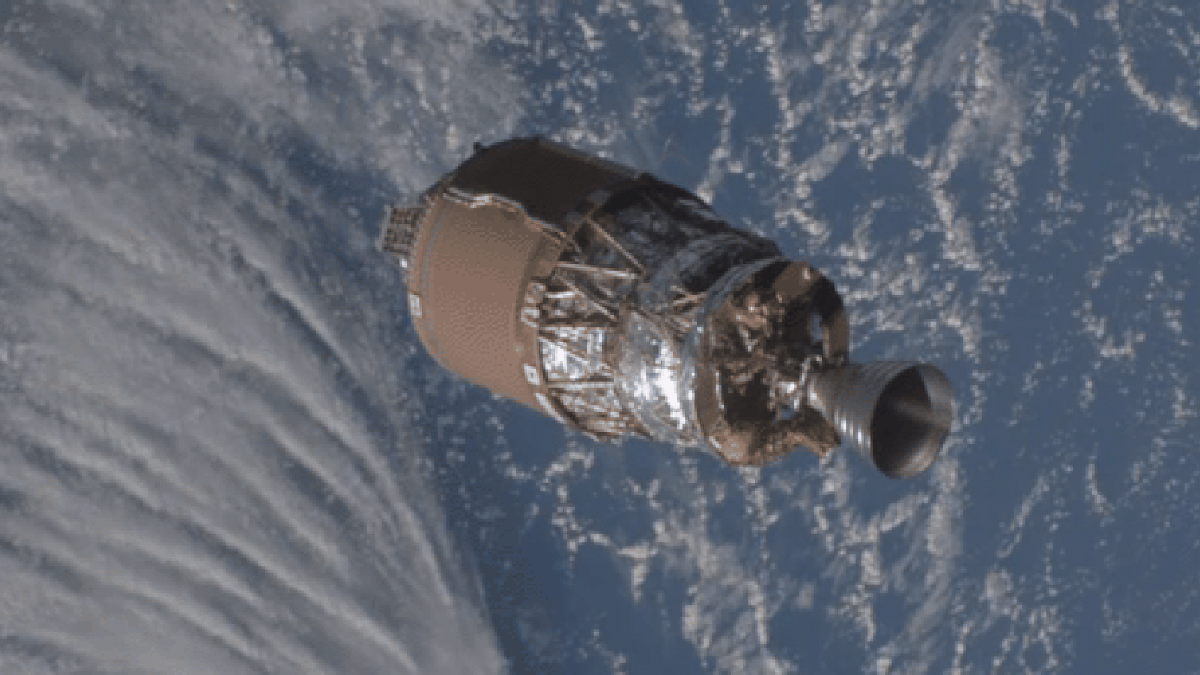There’s an awful lot of junk floating around in space, with recent estimates suggesting there could be more than 25,000 objects in orbit around the Earth right now. We don’t often get to see this junk up close to find out how a lifetime in space affects man-made objects, until now.
A probe launched by Japanese researchers has spent months following a defunct rocket stage, according to a report from Ars Technica. Now, the probe has sent back its findings, which show the state of the aging launcher in satisfying detail.
The rocket in question was launched into space more than 15 years ago. It measures more than 35-feet across, weighs approximately three tons and has been left to float above the Earth with everyone just hoping that it doesn’t hit anything else up there.
Now, Japan is working on a method of clearing its junk from space, which kicks off with the Active Debris Removal by Astroscale-Japan mission – catchy name, I know. The mission launched back in February and has seen a probe scope out the defunct rocket and trail it above Earth, as Ars Technica explains:
ADRAS-J photographed the upper stage of an H-IIA rocket from a range of several hundred meters and then backed away. This was the first publicly released image of space debris captured from another spacecraft using rendezvous and proximity operations.
Since then, Astroscale has pulled off more complex maneuvers around the H-IIA upper stage, which hasn’t been controlled since it deployed a Japanese climate research satellite in January 2009. Astroscale attempted to complete a 360-degree fly-around of the H-IIA rocket last month, but the spacecraft triggered an autonomous abort one-third through the maneuver after detecting an attitude anomaly.
Scientists have since uncovered and fixed the issue that caused the last flyby to be aborted, and have returned to the useless rocket to see what condition it’s in. Astroscale, the private company behind the program, has now shared some up close up footage of the defunct ship as it tumbles above the Earth.
The rocket, which is about the size of a city bus, looks to be in pretty good condition as its outer shell is intact and Ars reports that it appears “remarkably similar to the way it looked when it launched.” As well as assessing its physical condition, the team also observed how the defunct craft behaves in space, monitoring its spin rate and speed so they can plot a means of one day removing it from the sky.
This is the next stage for the ADRAS-J program, but it will be infinitely more complex as the crafts it’s hoping to remove from orbit were never designed to dock or be collected from space. In order to capture and remove space debris, the program is developing a second-generation craft that will be capable of capturing orbiting junk. Data from this mission will be used to plan the next stage in the space cleanup.
Cleaning up our orbit won’t be an easy feat, and will require collaboration with space agencies around the world. Past proposals for space-cleaning missions have already been submitted by agencies in Europe and the U.S., which are both hoping to clean up the cosmos over the coming decade.

